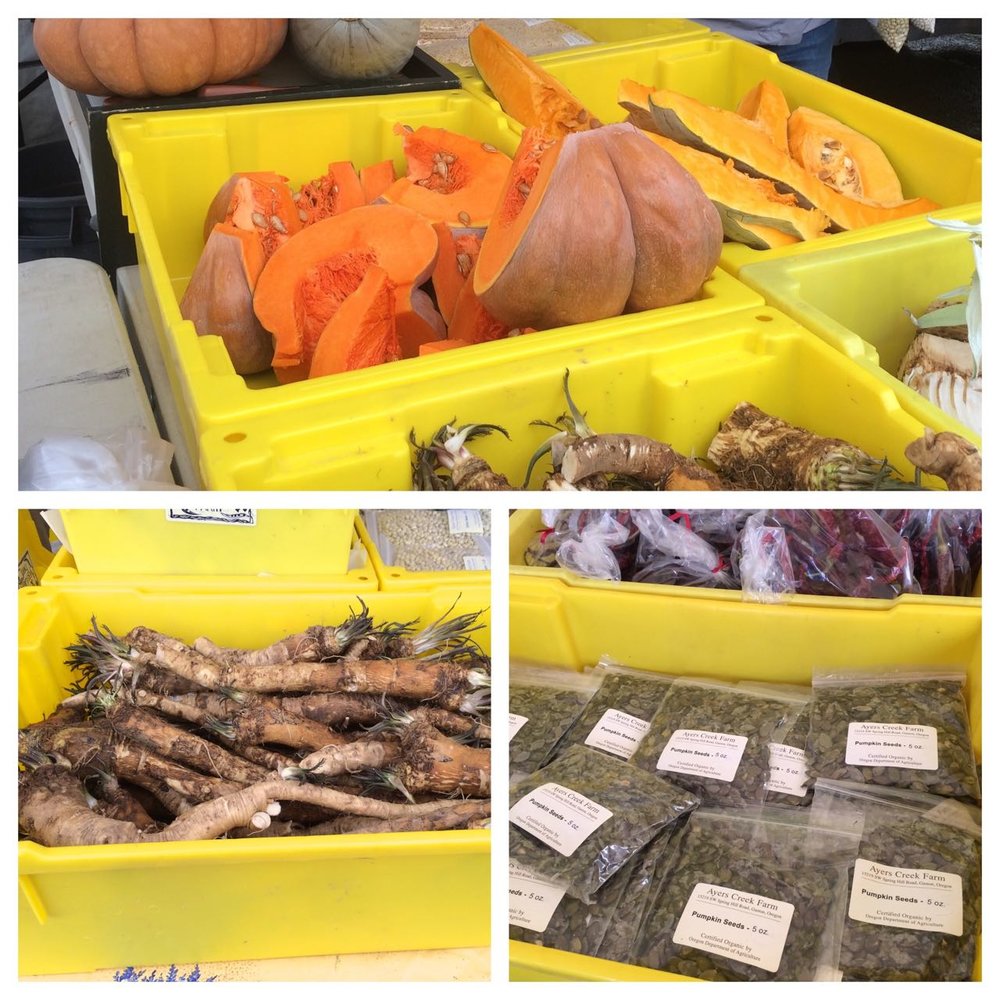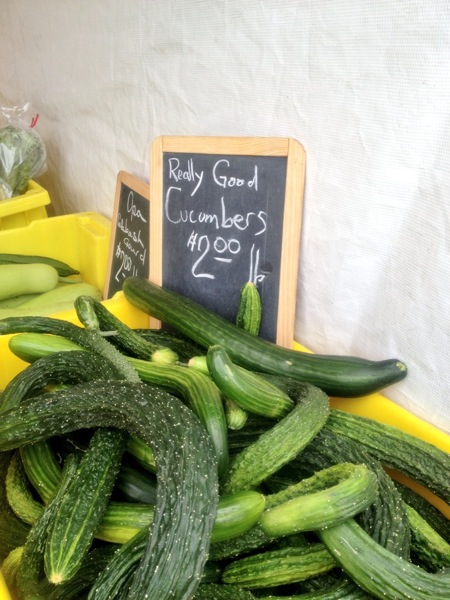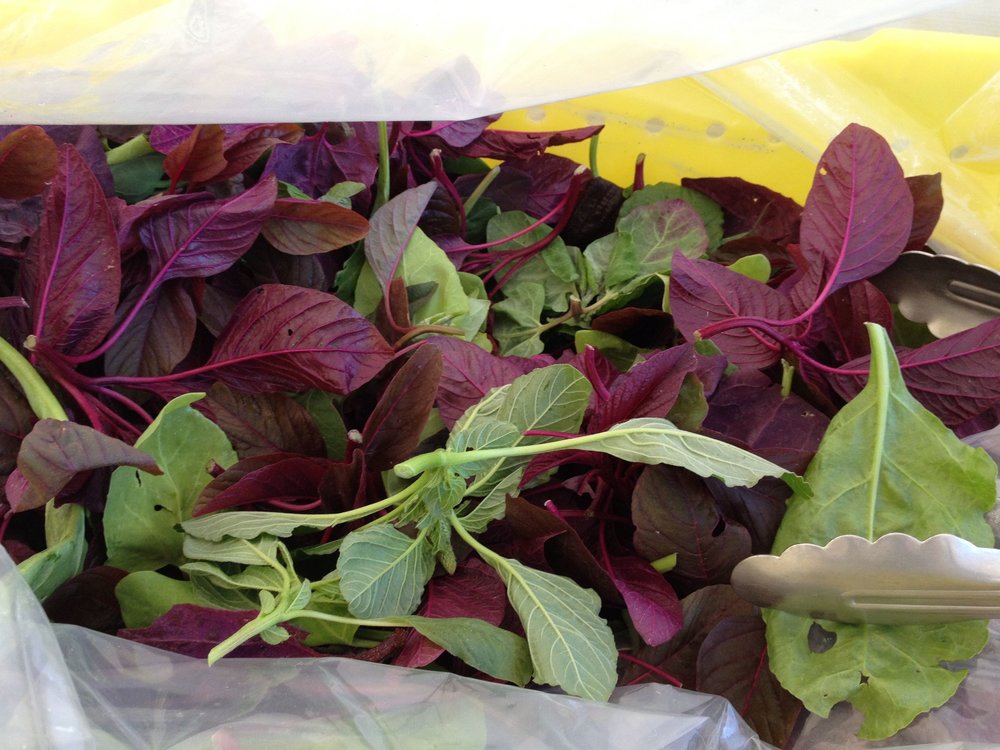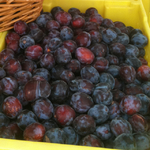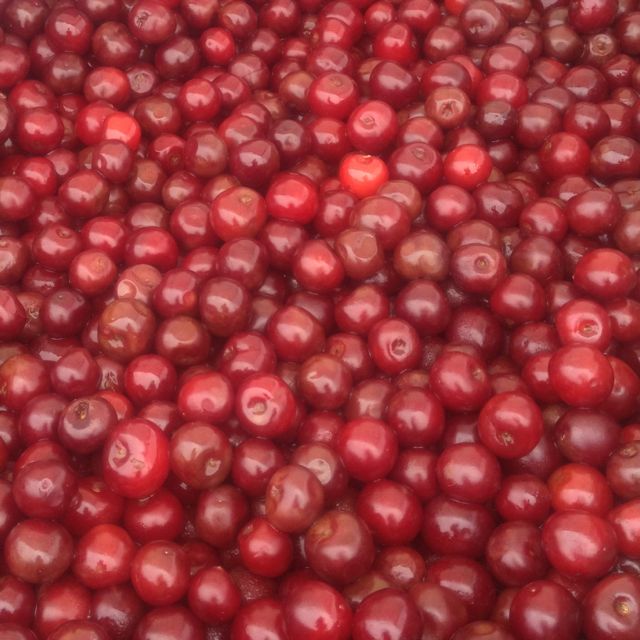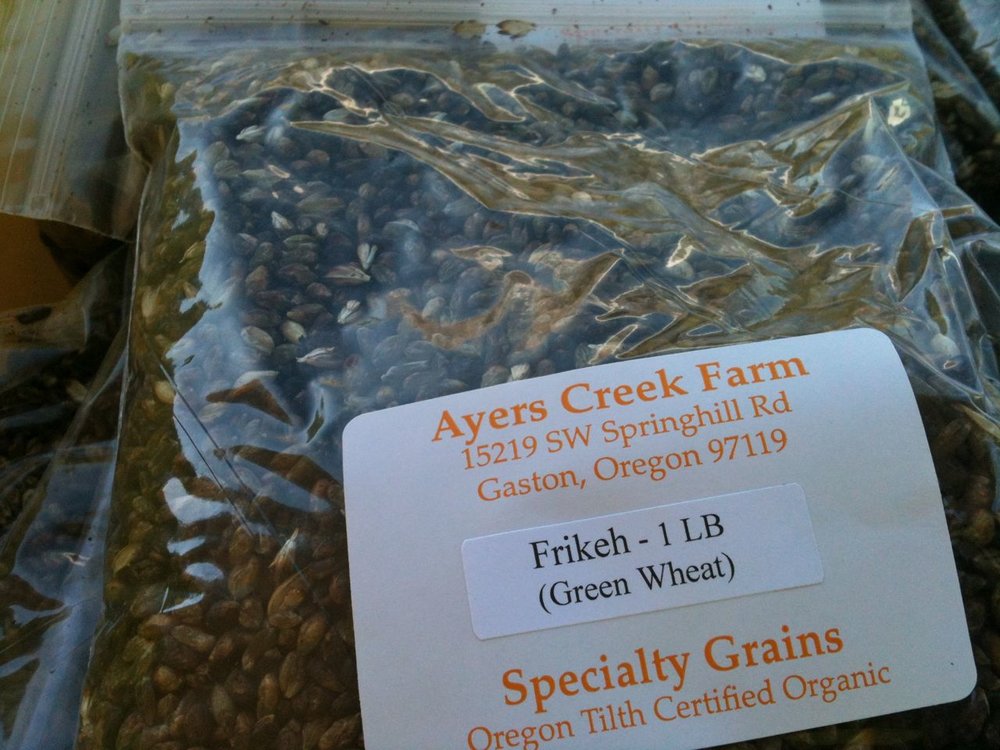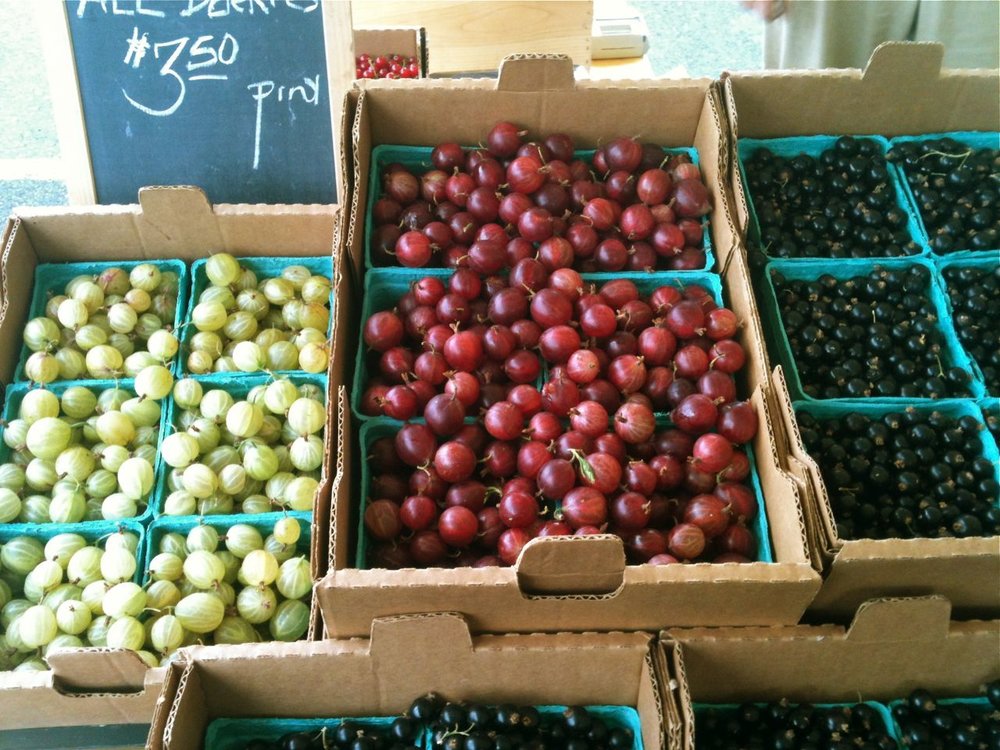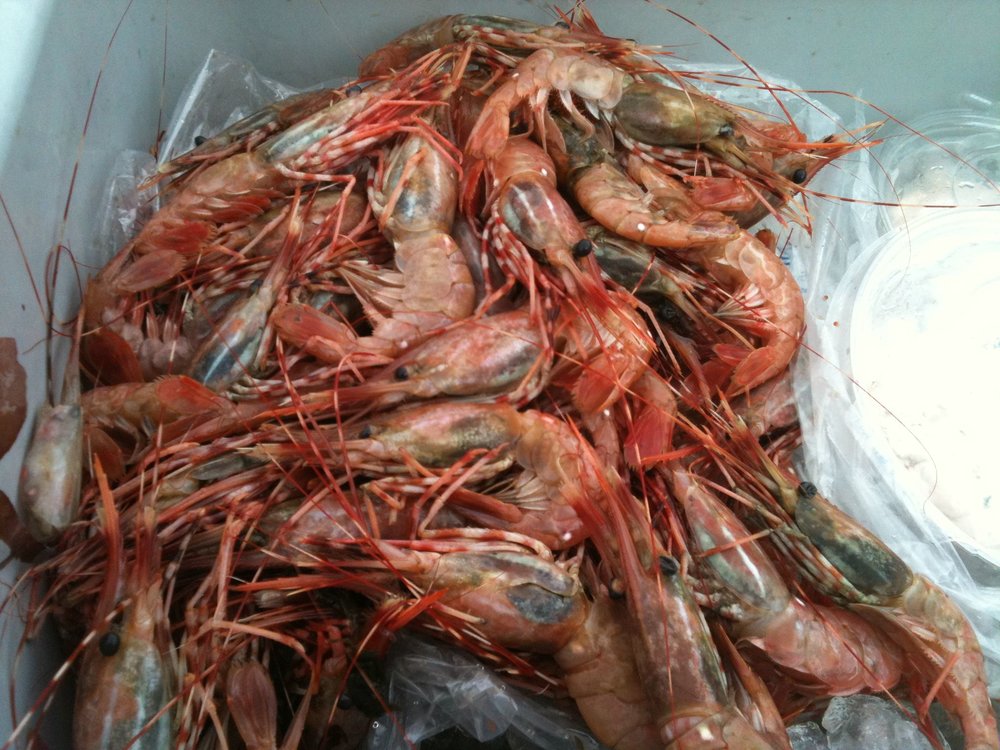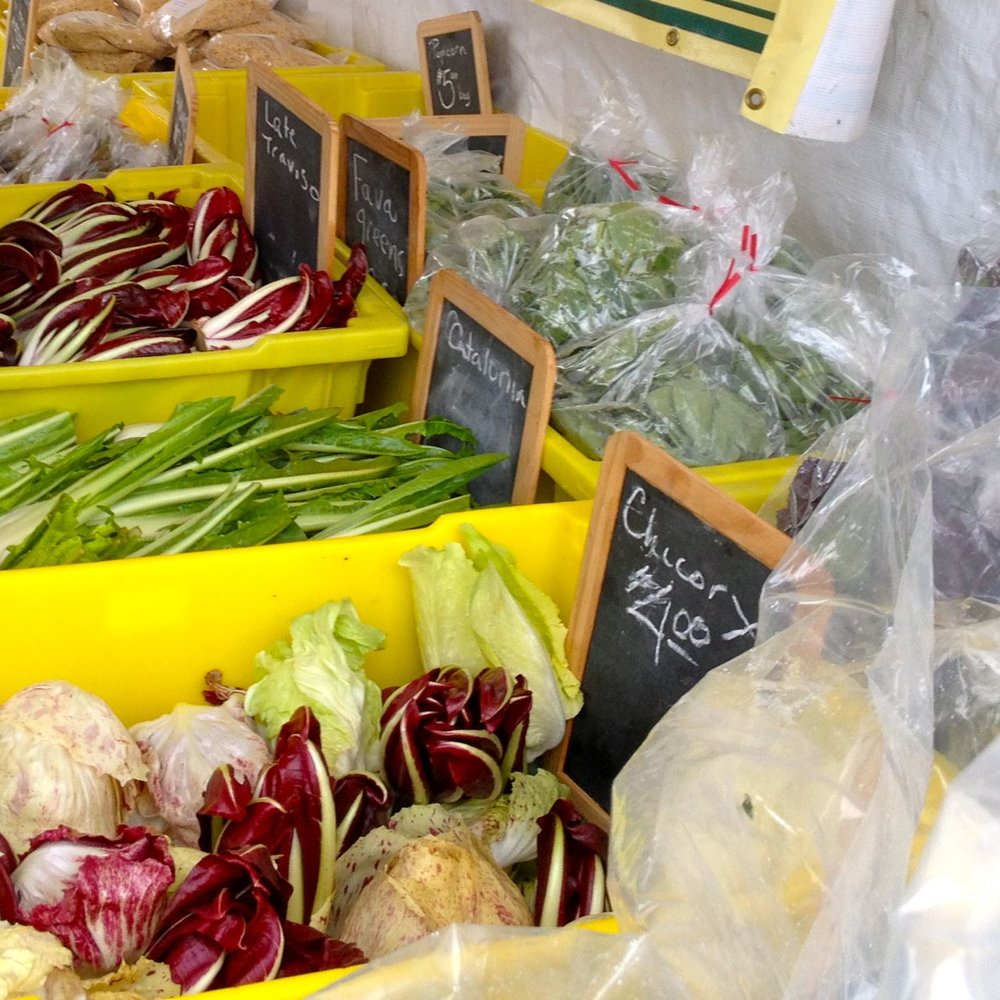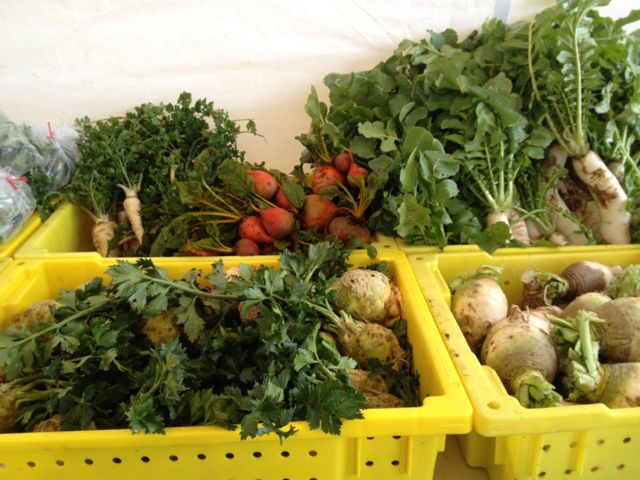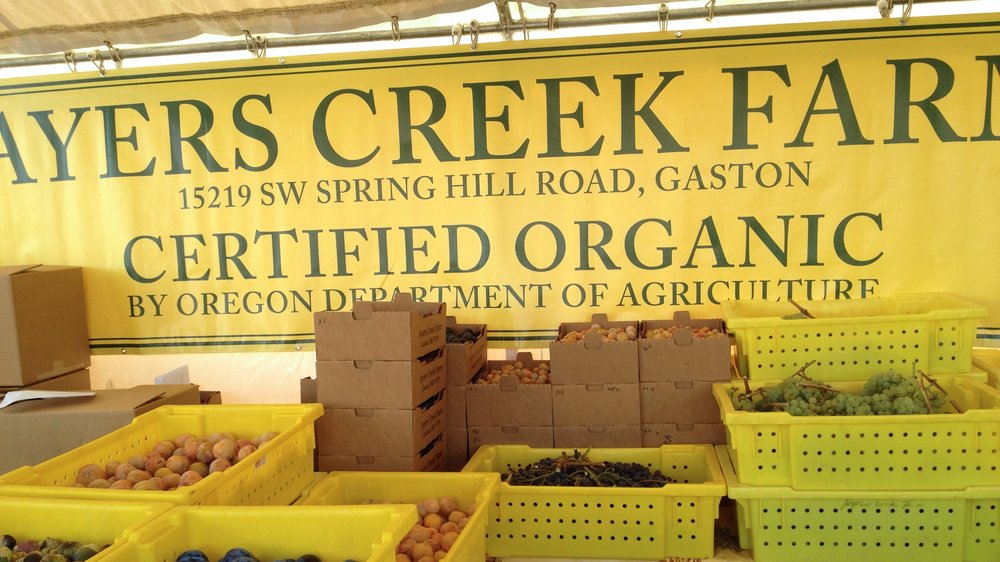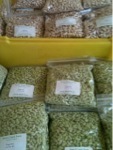Ayers Creek Farm Newsletter September 8 2013
Guest User
 Mirabelle de NancyTomorrow, as we wend our way Bald Peak, for the first time in two months we will not be immersed in the fragrance of caneberries. Instead, the van will be redolent with late summer mix of onions, plums, grapes, tomatoes and the earthiness of beets ready to be purchased at the Hillsdale Market when the bell rings at 10:00 AM.
Mirabelle de NancyTomorrow, as we wend our way Bald Peak, for the first time in two months we will not be immersed in the fragrance of caneberries. Instead, the van will be redolent with late summer mix of onions, plums, grapes, tomatoes and the earthiness of beets ready to be purchased at the Hillsdale Market when the bell rings at 10:00 AM.
People often ask us where they can buy seeds for the our Astiana tomatoes. The fact is, you are buying seeds when you buy the fruits at the market. That is how we started with the tomato, just 15 seeds from a tomato purchased in the market of Asti, a town in the Piedmont of Italy. It is a representative of a cooking tomato landrace from the Po River Valley. The fruits are large, green-shouldered, pear-shaped and often pleated. A landrace is a population of fruits, vegetables or livestock that is shaped by the environment and culture of the region to which it belongs. Representative of the race will vary from village to village, but they have similar qualities. These tomatoes are selected for the quality of their flavor and texture after their encounter with the stove.
We never use the word heirloom in reference to the varieties we grow. We dislike the term, and the last time it was used in this newsletter was to explain our dislike of the word best applied to fragile, inanimate objects handed down generation-to-generation. Beautiful Corn (link) was written without using the word at all. Heirlooms are defined as named varieties that have been around for 25 years. Seeds are living plants, reshaped by their cultivators year-after-year, and landrace is the better term. It recognizes the living organisms are constantly changing and adapting to new environments and cultures, this applies to their cultivators as well. The fact is, we have reshaped that tomato we purchased in Asti seven years ago, but we have carefully kept its fine cooking qualities foremost in our efforts.
Approximately 80% of the legumes, vegetables and grains we bring to market are grow from seeds we produce on the farm. Another 10% are grown from Wild Garden Seeds (http://www.wildgardenseed.com/) in Philomath, about 60 miles south of Gaston. Producing our own seed allows us to draw out traits valuable for successful production in the Willamette Valley.
This month the Organic Seed Alliance (www.seedalliance.org) will hold organic seed production workshops for farmers at Adaptive Seeds in Sweet Home on the 17th and at Ayers Creek on the 19th. Veteran seed producer John Navazio will lead the workshops. He is both practitioner and theoretician, an important source of information and inspiration to those of us who grow our own seed. Linda Colwell will prepare a lunch for the participants that will include the fruits, vegetables and grains we grow at the farm, underscoring the link between the seeds and food. It will be a fun day for all and we expect to learn a lot from Navazio.
Adopting the name Astiana for our tomato, we honor the long tradition of naming varieties after the location of their origin. This week, we will bring to the market a delightful, spicy grape called Canadice. It is a celibate variety from New York State research station in Geneva, New York. Until recently, they named all their varieties after places in New York; Candice is one of the Finger Lakes in western New York. Other varieties that we grow from that program with a New York tag include the grapes Interlaken, Sheridan and Steuben, and the plums Seneca and Stanley. Sadly, they have abandoned this tradition and now names are developed through "consumer testing." Two recent releases are called SnapDragon and RubyFrost. Perils of callow thinking.
This week, we will have an abundance of plums, including Prune d'Ente, Prune d'Agen, Fellenberg (a.k.a Italian), Brooks, Damsons and Mirabelle de Nancy, all bearing the name of their origin. Damson is an English corruption of Damascene; that is, from Damascus – Lebanon, not Oregon. In addition to the grape Canadice, we will have the incomparable Price, named after a real person, another naming convention that meets our approval. Expect onions, garlic, shallots, cornmeal (doubling down on the tradition as it is named after Roy Fair of Calais Vermont), popcorn, chickpeas and preserves, as well. Oh yes, tomatillos and maybe cucumbers.
We will continue to offer the Astianas at $1.75/LB when 20# or more are purchased. We will have some boxes at the market, or bring a milk crate or wine box of your own. We will have a self-service scale on hand. Of course, if you want to purchase them as heirlooms, we will be obligated to charge the going rate for such special tomatoes, $3.50 or more if we recall correctly. Heck, they are certified organic, so maybe more . . .
See you all tomorrow,
Carol & Anthony
Gatson, Oregon
